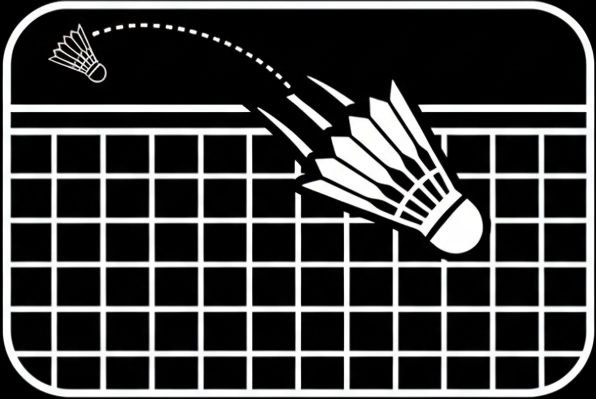What makes badminton strings important for your game?
Badminton strings play a vital role in your racket’s feel and your overall performance on the court. Whether you are a beginner or an advanced player, understanding your strings will impact your shots, control, and comfort. The right strings can boost your power (and adrenaline), add precision to your shots, and improve your experience. The right string in the right tension will sound like music to your ears. I am talking ‘Shine on you crazy diamond’ by Pink Floyd.
How many types of badminton strings exist?
There are three main categories of badminton strings.
- Repulsion (Power) Strings: Helps generate extra power with little effort. You know that scene in Ironman where he shoots something from his hand and turns back not bothering to look at the target because he knows its going to be obliterated?
- Control Strings: Players who value accuracy and touch prefer these strings. I have played against some folks who are good at the net, they use strings which have a high control rating.
- Durability Strings: These are best for frequent players who need strings to last longer. My stringer charges me $18 for his work. I most definitely factor this in when selecting my strings.
Additionally, strings come in different thicknesses or gauges, ranging from 0.62 mm to 0.75 mm.
- Thinner Strings (0.62 – 0.67mm): Offer more repulsion and control.
- Thicker Strings (0.68mm and above): Provide extra durability.
Which string tension should you choose?
String tension affects your playing style and comfort.
- Lower tension (18–23 lbs): Offers a larger sweet spot and more power. Beginners usually do well with lower tension.
- Medium tension (24–27 lbs): A good balance for intermediate players looking to improve accuracy and control. I put 28lbs on my Head heavy Astrox 100zz while I stick to 26 on my Nanoflare 800 pro
- Higher tension (28 lbs+): Used by advanced players who want maximum control and faster shuttle response. My Yonnex Astrox 100zz is a fully loaded head heavy cannon with 28 lbs of string tension. Opponents, please wear eyewear when I hold this.
Assess your playing level honestly. Beginners should avoid high tension to prevent injuries and frame damage.
What materials are badminton strings made of?
Most strings use nylon or synthetic gut. For enhanced performance, some brands include advanced materials such as:
- Vectran: Increases durability.
- Titanium: Boosts repulsion and resilience.
- Multifilament fibers: Provide a soft, flexible feel for easier play.
Choose the material based on your play style and level. Those new to badminton will feel comfortable sticking to basic nylon, while competitive players may experiment with advanced materials.
How often should you replace your strings?
There’s no fixed timeline, but a simple rule applies:
- If you play weekly, change your strings every two to three months.
- If you play more often, or if you notice loss of tension or fraying, restring sooner.
Fresh strings help you maintain optimal power and control.
How do weather conditions and humidity affect your strings?
Strings contract in cooler weather and loosen in warmer or more humid environments.
- If you train in a humid country, choose thicker or more durable strings.
- If you play in dry or cold conditions, check tension before each session.
Regular checks avoid unwanted surprises during important games.
What factors should you consider before buying strings?
Focus on these aspects for the best results:
- Gauge: Thinner for control, thicker for stamina.
- Tension: Adjust based on skill level and comfort.
- Material: Basic nylon for most, advanced options for tournaments.
- Brand reputation: Well-reviewed strings often perform better and last longer.
Experiment with different combinations to find your preference.
What are the best badminton string brands?
Some popular brands include:
- Yonex: Known for a wide range.
- Li-Ning: Strong on durability.
- Victor: Trusted for control-focused strings.
- Ashaway: Great for power.
You will find quality strings for all skill levels under these brands.
Can string color affect performance?
While the string’s color does not change performance, bold colors help you spot frays and wear more easily. Play confidently knowing your strings are in top condition.
Bonus: Tips to extend string life
- Store your racket in a cover after playing.
- Avoid contact with sharp objects.
- Restring before important matches, not after.
Taking care of your strings will save money and improve consistency.
Final Thoughts: How do you choose the ultimate badminton string set-up?
Select your strings with honesty about your level and needs. Beginners should prioritize comfort and durability. Intermediate players can look for strings with added control. Advanced players might experiment with tension and material blends.
Test different set-ups, listen to your coach or friends, and monitor how you feel during games. With the right knowledge from this ultimate guide to understanding your strings, you are ready for a powerful, enjoyable journey on any court!
Key Takeaways (Quick Q&A)
A: Choose lower tension and durable, synthetic gut strings.
A: Thinner strings give better feel, thicker strings last longer.
A: Loss of tension, visible fraying, or reduced shot performance mean it’s time to restring





